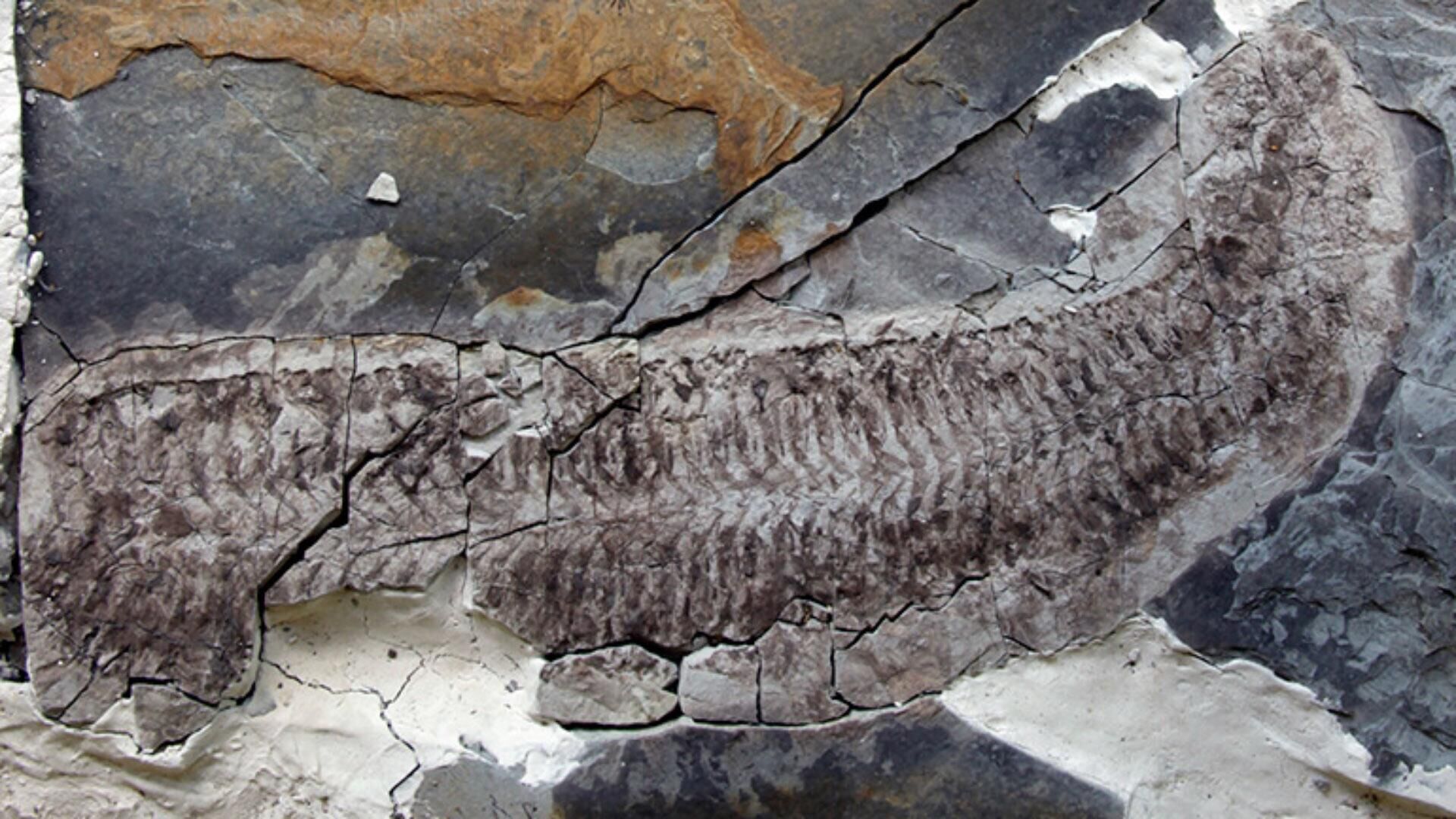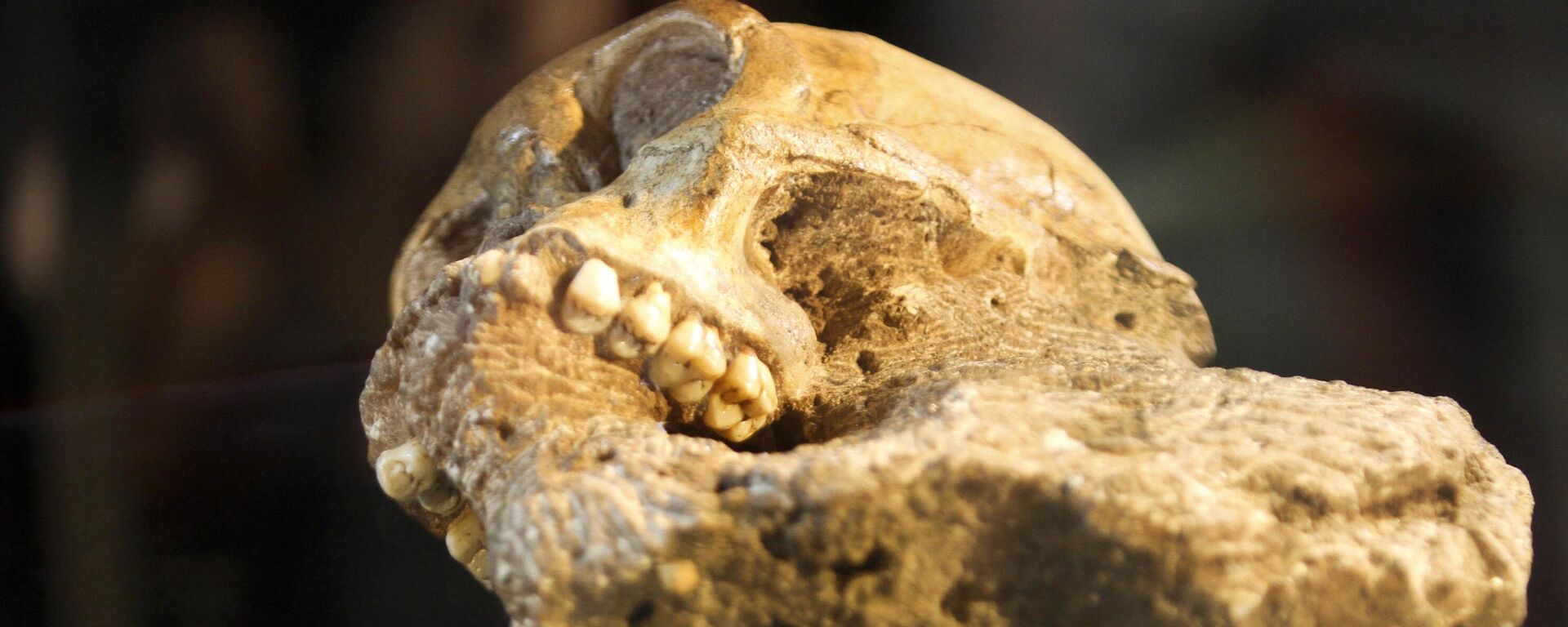https://en.sputniknews.africa/20250331/inside-out-legless-headless-wonder-new-444-million-year-old-fossil-species-in-south-africa-1071358320.html
'Inside-Out, Legless, Headless Wonder': New 444-Million-Year-Old Fossil Species in South Africa
'Inside-Out, Legless, Headless Wonder': New 444-Million-Year-Old Fossil Species in South Africa
Sputnik Africa
South Africa's Soom Shale, a Lagerstätten site in the Cederberg Formation, yielded the fossil of Keurbos susanae, the only species of the enigmatic arthropod... 31.03.2025, Sputnik Africa
2025-03-31T11:49+0200
2025-03-31T11:49+0200
2025-03-31T11:49+0200
sub-saharan africa
south africa
earth
southern africa
research
archeology
species
nature
africa
https://cdn1.img.sputniknews.africa/img/07e9/03/1f/1071357936_0:0:1920:1080_1920x0_80_0_0_615cd99b555a75f22cc18fa0b85931ec.jpg
After 25 years of analysis, University of Leicester researchers identified the fossil as Keurbos susanae, a multi-segmented creature nicknamed "Sue," after its discoverer's mother.“Remarkably her insides are a mineralized time-capsule: muscles, sinews, tendons and even guts all preserved in unimaginable detail. And yet her durable carapace, legs and head are missing—lost to decay over 440 million years ago,” said Professor Sarah Gabbott, describing the ancient arthropod from the Ordovician period.Researchers remain uncertain about "Sue's" exact evolutionary relationships, but confirm it was a primitive marine arthropod. While arthropods, which make up 85% of Earth's animal life and have a rich fossil record, are typically preserved as external features, "Sue" is unique because its internal structures are fossilized.The fossil was discovered in the Soom Shale, a South African seabed formed during a major glaciation 440 million years ago. The marine basin where "Sue" lived appears to have been sheltered from the harsh conditions, allowing a unique community of animals to thrive.The toxic, oxygen-deprived environment where "Sue" was preserved likely facilitated a unique chemical process, leading to its unusual inside-out fossilization. However, this hinders comparison to other fossils, making its placement on the evolutionary tree of life difficult.
https://en.sputniknews.africa/20250307/taung-child-fossil-re-centering-entire-field-of-paleoanthropology-on-africa--1070974124.html
south africa
earth
southern africa
africa
Sputnik Africa
feedback@sputniknews.com
+74956456601
MIA „Rossiya Segodnya“
2025
News
en_EN
Sputnik Africa
feedback@sputniknews.com
+74956456601
MIA „Rossiya Segodnya“
Sputnik Africa
feedback@sputniknews.com
+74956456601
MIA „Rossiya Segodnya“
south africa, earth, southern africa, research, archeology, species, nature, africa
south africa, earth, southern africa, research, archeology, species, nature, africa
'Inside-Out, Legless, Headless Wonder': New 444-Million-Year-Old Fossil Species in South Africa
Ekaterina Shilova
Writer / Editor
South Africa's Soom Shale, a Lagerstätten site in the Cederberg Formation, yielded the fossil of Keurbos susanae, the only species of the enigmatic arthropod genus Keurbos. This discovery dates to the Hirnantian of the Late Ordovician.
After 25 years of analysis, University of Leicester
researchers identified the fossil as Keurbos susanae, a multi-segmented creature nicknamed "Sue," after its discoverer's mother.
“Remarkably her insides are a mineralized time-capsule: muscles, sinews, tendons and even guts all preserved in unimaginable detail. And yet her durable carapace, legs and head are missing—lost to decay over 440 million years ago,” said Professor Sarah Gabbott, describing the ancient arthropod from the Ordovician period.
Researchers remain uncertain about "Sue's" exact evolutionary relationships, but confirm it was a primitive marine arthropod. While arthropods, which make up 85% of
Earth's animal life and have a rich fossil record, are typically preserved as external features, "Sue" is unique because its internal structures are fossilized.
The fossil was discovered in the Soom Shale, a South African seabed formed during a major glaciation 440 million years ago. The marine basin where "Sue" lived appears to have been sheltered from the harsh conditions, allowing a unique community of animals to thrive.
The toxic, oxygen-deprived environment where "Sue" was preserved likely facilitated a unique chemical process, leading to its unusual inside-out fossilization. However, this hinders comparison to other fossils, making its placement on the evolutionary tree of life
difficult.


